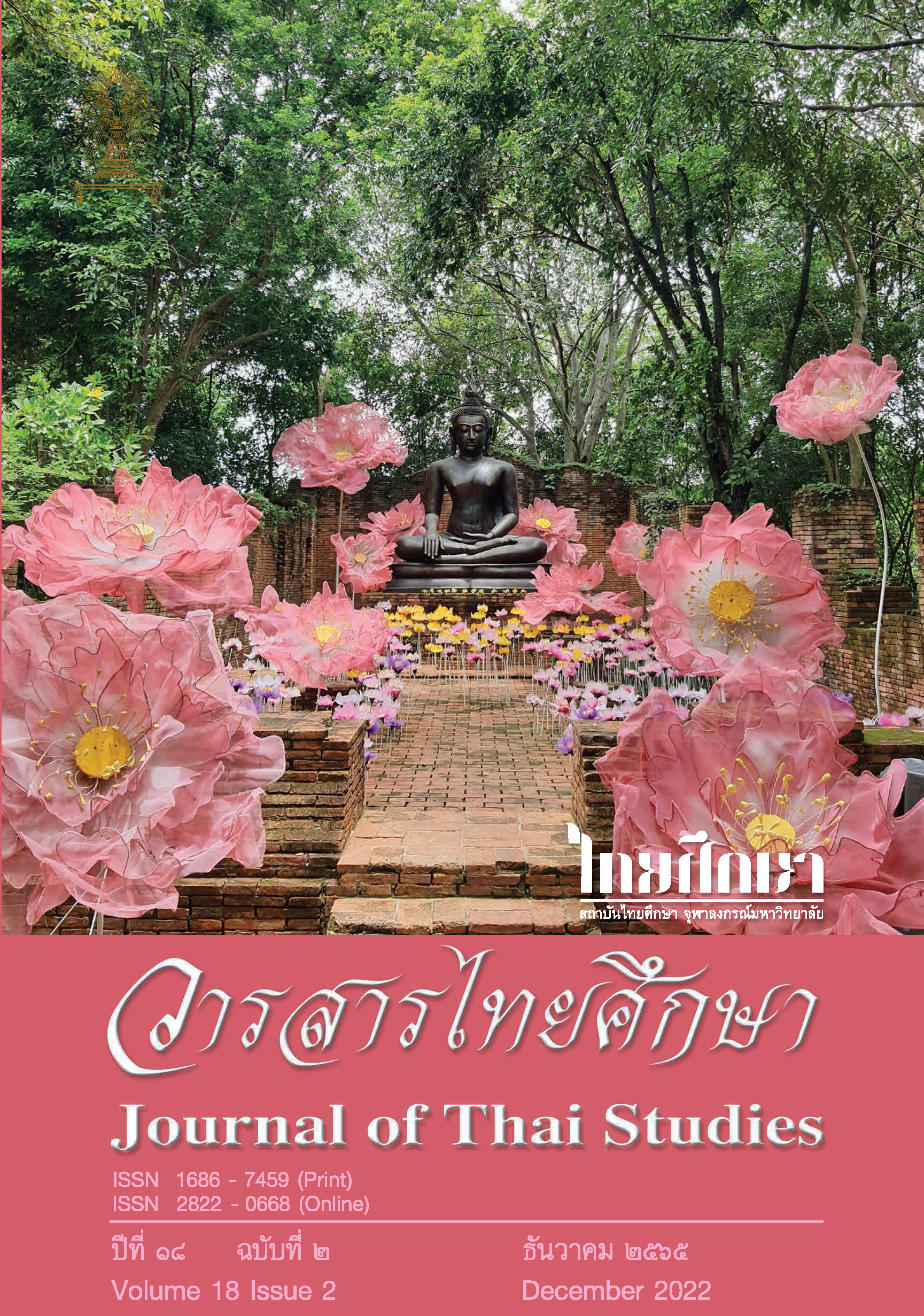Modern veterinary medicine of the Siamese government during the reign of King Chulalongkorn
Main Article Content
Abstract
After signing the Bowring Treaty in the reign of King Mongkut, rice became the most significant export of Siam. At the same time, the demand for rice rapidly increased in foreign countries. Therefore, the Siamese government expandedthe cultivatedareabyconstructing more canals. However, expanding the cultivated area was not the only factor needed to increase the agricultural product. Decreasing the mortality rate of food-producing animals, including cattle,buffaloes,pigs andsheep, was another factor contributingto the increase of agriculture products. Therefore, during the reign of King Chulalongkorn, which was the age that Siam received knowledge and technology from the West, the Government decided to hire Western veterinarians to serve the government. Simultaneously, a school of veterinary medicine was established for training Thai veterinarians. After that, the knowledge of veterinary science was used to prevent and control epidemics in animals through animal quarantine and vaccination. Furthermore, the influence of the West onanimal welfare also encouragedthe government to enact laws relating to animal welfare of livestock that would be sent to foreign countries.
Downloads
Article Details

This work is licensed under a Creative Commons Attribution-NonCommercial-NoDerivatives 4.0 International License.
Journal of Thai studies is licensed under a Creative Commons Attribution-Noncommercial-NoDerivatives4.0 Intenational (CC BY-NC-ND 4.0) licence, unless otherwise stated. Plese read our Policies page for more information on Open Access, copyright and permissions.
References
Chaengkhwam krasuang thamkan phanaek krom phayaban rueang chit si ram kan rokrabat sat tam huamueang monthon krungthep lae huamueang tangtae dueansinghakhom thueng tulakhom sok 122 [The announcement of the Ministry of Education, Department of Medical Services: Vaccination for preventing infection in animals from August-October 1905]. (23rd October 1905) Ratkitchanubeksa 21[Government Gazette 21]. p. 522 – 523.
Jaikorn, T. (2012). Concept and knowledge of pests in Thai society 1892-1944. (Master’s Thesis). Chulalongkorn University, Bangkok, Thailand.
Mahawitthayalaithamsat lae kanmueang. (1939). Pramuankotmai ratkan thi 1 chunlasakrat 1166 phim tam chabap luang tra 3 duang[The Code of Law of Rama I, 1804 copying from the Three Seals Law]. Bangkok: Faculty of Law, Thammasat University.
NA. KK.0301.1.20/1 The Annual Report of the Director of the Government Serum Laboratory. (1907 – 1909).
NA. KT. NA. KT. 65.16 Farangsesh Kho Maisak Maikan Konpayabarn Nukbinasa [France requests teak, wood, nurses and pilots]. (5th September 1917)
NA. R.5 M.18.4/3 Khobangkhap samrap pongkan kan thonkam sat thibanthuk long kampan chak krung sayam [A regulation aboutpreventing the torture of animals shipped from Siam]. (30th July – 28th September 1902).
NA. R.5 M.18.4/4 Rueang ratthut yoeraman khatkhan phraratbanyat pongkan sat thonman sat phahana ro. so. 120 [The German minister opposes the Act of preventing beasts of burden, 1902]. (2nd August 1902 – 28th September 1904).
Phrabromrat-ongkan prakat phoemtoem phraratbanyat samrap truat pongkanrok sat phahana Rattanakosinsok 119 [The royal decree:the recension of the act of preventing infectious diseases in animals 1901]. (19th May 1908) Ratkitchanubeksa 24[Government Gazette 24]. p. 155.
Phrabromrat-ongkan prakat tang krasuangkettrathikan lae plian tamnaeng senabodi [The royal decree establishing the Ministry of Agriculture and changing the minister]. (3rd September 1900) Ratkitchanubeksa 16 [Government Gazette 16]. p. 302 – 303.
Phraratbanyat chua samai samrap pongkanrok sat phahana Rattanakosinsok 115. [The Act of preventing infection in beasts of burden 1897]. (17thJanuary 1897) Ratkitchanubeksa 13 [Government Gazette 13]. p. 506 – 507.
Phraratbanyat laksana kha khokrabue lae sukon tam huamueang [The Act of butchery of cows, buffalos and pigs in the provinces]. (3rd March 1901) Ratkitchanubeksa 17 [Government Gazette 17]. p. 696 – 700.
Phraratbanyat samrap truat pongkanrok sat phahana Rattanakosinsok 119 [The act of preventing infectious diseases in beasts of burden 1901]. (1st July 1901) Ratkitchanubeksa 17 [Government Gazette 17]. p. 137 – 139.
Phraratbanyat sat phahana ro. so. 110 [The act of beasts of burden 1892]. (23rd August 1892) Ratkitchanubeksa 8 [Government Gazette 8]. p. 180 – 185.
Phraratbanyat rangap rokrabat [The act of restraining infectious diseases].(23rd November 1913) Ratkitchanubeksa 30[Government Gazette 30]. p. 372 - 379. Phraratbanyat rokrabat pasusat lae sat phahana phutthasakrat 2474 [The act of infectious diseases in livestock and beasts of burden, 1931]. (23rdNovember 1931) Ratkitchanubeksa 48 [Government Gazette 48]. p. 496 – 509.
Prakat krasuangsetthakan rueang waduai rok sueng pen rokrabat tam khwammai haeng phraratbanyat rokrabat pasusat lae sat phahana phutthasakrat 2474 [The announcement of the Ministry of Agriculture:definition of infectious diseases in the act of infectious diseases in livestock and beasts of burden, 1931] Ratkitchanubeksa 48[Government Gazette 48]. p. 4436 – 4437.
Rajabhadhraks, C. (1977). Agricultural development and social change in Thailand from A.D. 1892-1932 (B.E. 2435-2475). (Master’s Thesis). Chulalongkorn University, Bangkok, Thailand.
Sattawaphaet samakhom haeng prathet thai nai phrabrom rachupatham.(2008), 60 Pi Achip sattawaphaet su sangkhom thai[60 Years of Veterinarians and Thai Society]. Bangkok: Samakhom.
Tantiwanit, P. (1985). 50 Pi Sattawaphaetthayasat bandit 2478 – 2528[50 years of Doctor of Veterinary Medicine, 1935-1985]. Bangkok: Faculty of Veterinary Medicine.
Wyatt, D. K. (2013). Prawatsat thai chabap sangkhep[A short history of Thailand]. Bangkok: The Foundation of the Promotion of SocialScience and Humanities Textbooks Project.


